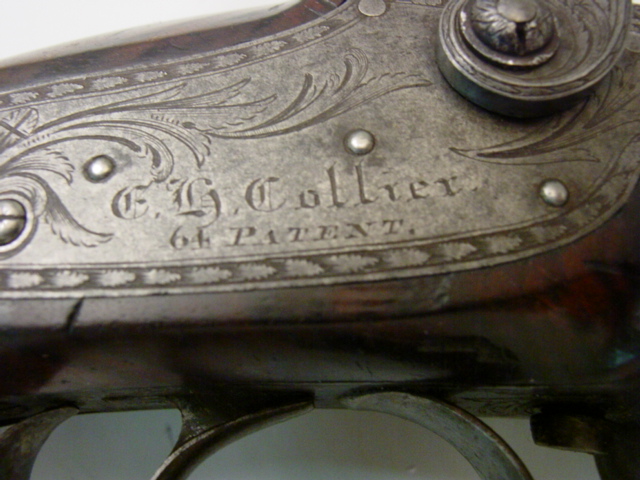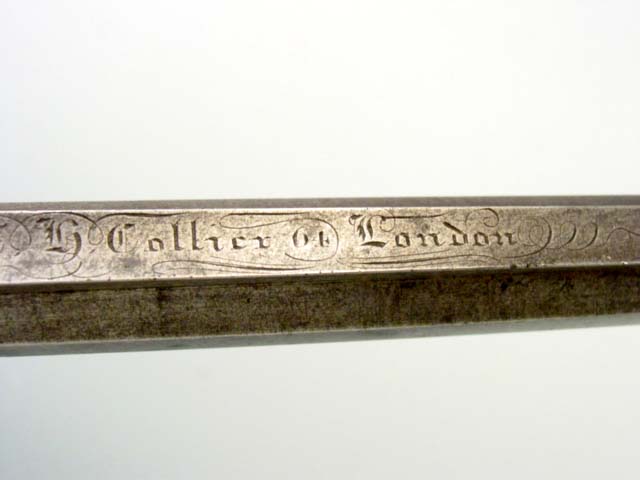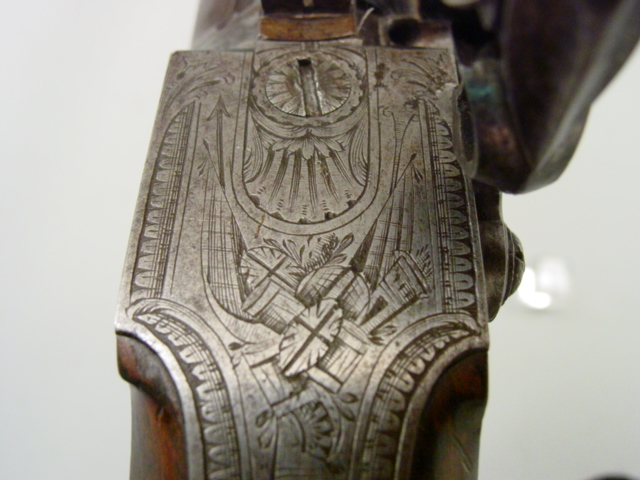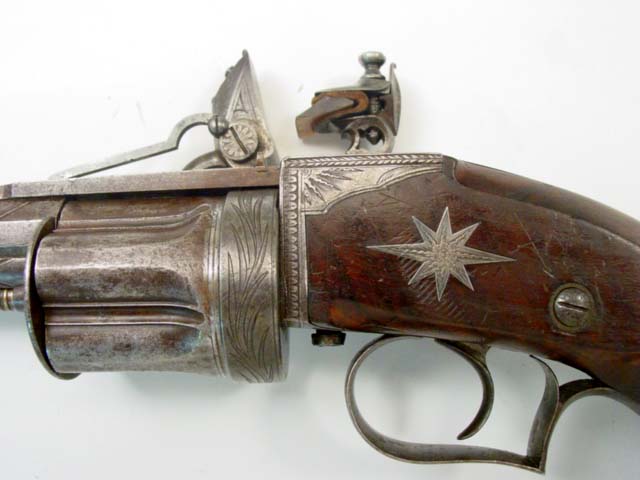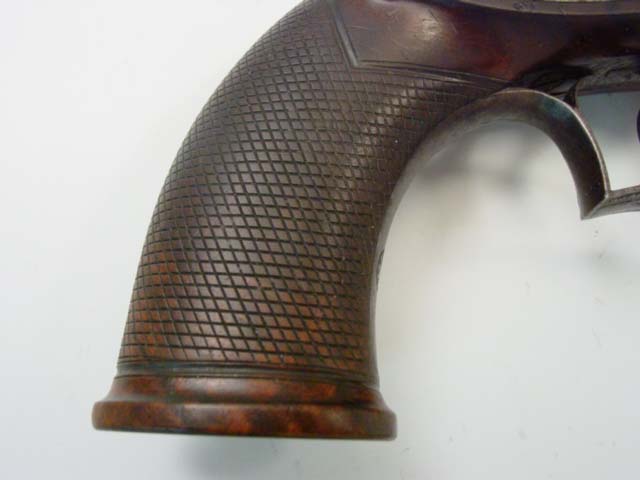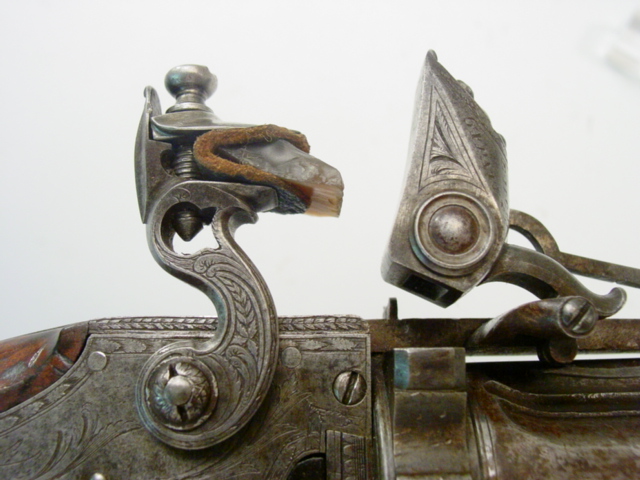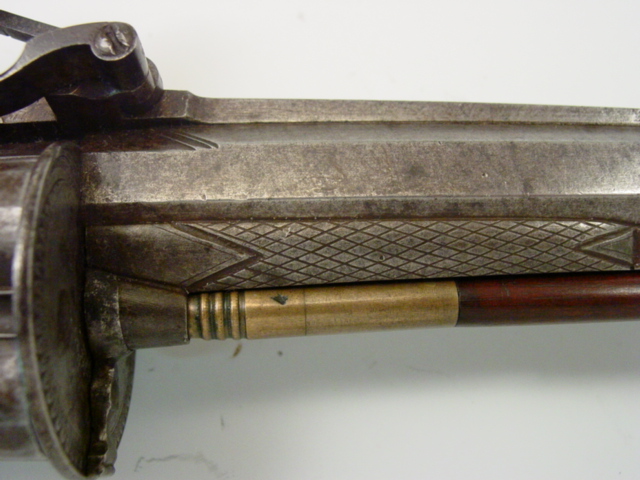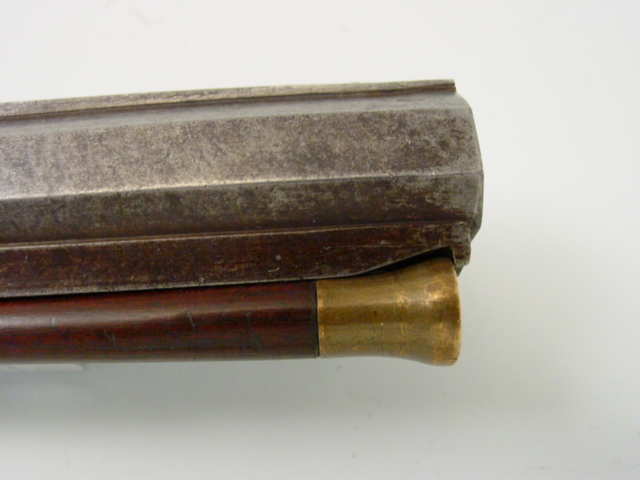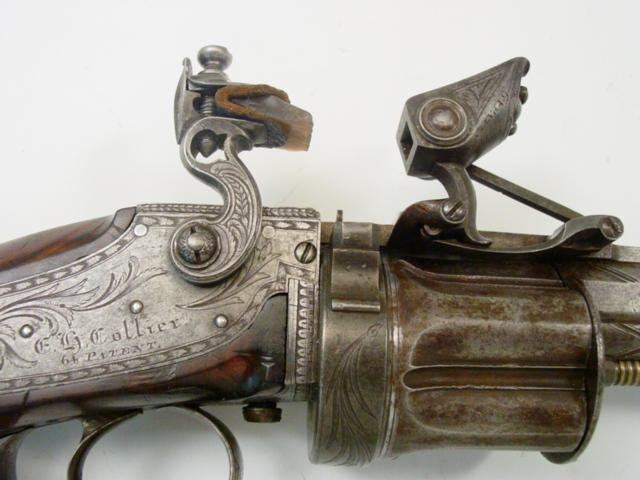
E.H. Collier
Rare Collier Patent Flintlock Revolver
.46 caliber, 6-inch octagonal barrel with steel under-rib and topstrap inscribed in old English script: E.H. Collier 64 London. Post-type front sight and open rear sight. Five-shot fluted cylinder with engraved backing plate, Frizzen inscribed: E.H. Collier/ 64 Patent. Frame, cock, lock plate and triggerguard finely engraved with stand-of-arms and flags panoplies with dentate borders. Lockplate marked: E.H. Collier/64 Patent. Engraved screws. Left side of stock with engraved eight-pointed star. Checkered walnut stock with blank silver wrist escutcheon. Cherry wood ramrod with brass tip and rammer.
Note
E. H. Collier of Boston, Massachusetts was an American engineer and inventor. The Collier revolver represents the first significant stage in evolution of the revolver. Patented in 1818, the original conception for the Collier called for the automatic revolution of the cylinder when cocking the hammer. The hollow roller frizzen automatically charged the pan each time it was closed. The hammer was fitted with a special hook to catch the cylinder and pull it rearward. The cylinder was wound counterclockwise on a spiral spring, and turned automatically when released from the breech collar, effectively making the Collier the first revolver. Due to obvious problems that Collier had with this makeup, this system was dropped and hand-turning of the cylinder was adapted. During the trial of Colt vs. Massachusetts Arms in 1851, Collier testified that he eventually considered the spring system useless, and "wanted to get rid of all superfluous parts". Over 10,000 pounds sterling worth of Collier Arms were shipped to India in the 1820's. It is probably no coincidence that a young Sam Colt began designing his revolver AFTER his visit to India in 1830-1 aboard the Corvo. Experts today consider the Collier as the first percussion revolver. Examples are extremely rare, and most of these few are found in museums.

